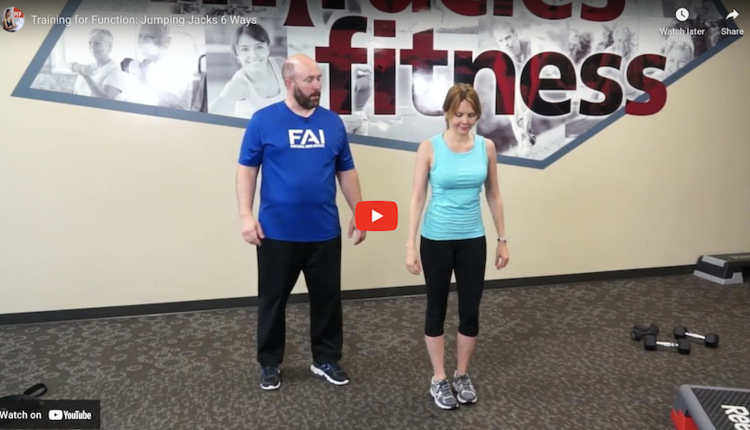Health clubs are enjoying a robust growth, according to the International Health, Racquet & Sportsclub Association (IHRSA), with memberships up more than 30% since 2000. In the past year alone, this $17.6 billion industry has welcomed some 1.4 million members into its facilities. It's a remarkably positive trend for club operators — one that many think will continue, uninterrupted, for years to come!
However, all is not picture-perfect. There is another troubling side to this trend: lapsed memberships are also growing. Attrition rates currently exceed 30%, according to IHRSA, a number that has steadily grown in recent years. When these lost members are factored into the equation, today's gyms face a never-ending annual challenge: replacing nearly a third of its members just to stay even. Attracting new members is extremely expensive, and in fact, it's been calculated that the cost of recruiting a new member is two-and-a-half times higher than the cost of retaining an existing one. And with intense competition from neighboring facilities — all offering tempting promotional packages for new memberships — the job of profitably managing a health club is incredibly challenging.
So, what strategies can fitness professionals employ to distinguish their facilities from others and — most importantly — retain their valued members? Many clubs add amenities like Internet access, juice bars or spa treatments. However, these enhancements are easily matched by competitors and quickly become parity offerings. Instead, managers need to concentrate on the powerful personal reasons why people join health clubs in the first place: to improve their fitness, enhance their appearance and contribute to their overall well-being. By helping individuals achieve and sustain these essential goals, a gym becomes far more than just a casual club experience; it becomes a vital, ongoing part of a person's identity and life.
How can your facility meet these compelling human needs, engender long-term member loyalty and, at the same time, dramatically differentiate itself from the competition? There's a surprisingly simple three-step process. And guess what? You've very likely already taken the first step!
Step One: Take Advantage of an Existing Tool
The first step is taking advantage of a useful tool that's already in your facility — the heart rate monitoring technology built into your exercise equipment, which, with its tracking mechanisms, can indeed motivate exercisers to achieve their personal fitness goals. To fully utilize this tool, it is important that facility managers/owners educate their members on the value of the technology and how to use it to maximize the efficiency of their workouts. Teaching members how to monitor their heart rate is relatively simple, as the exerciser just places his or her hands on the sensors, which are often built in to most exercise equipment. Then, with a simple lesson on calculating target heart rate (220 minus age) — and understanding the importance of staying within that range — your members can benefit from a far more effective workout. Furthermore, most machines are also supplied with a chest transmitter, which delivers heart rate information to the monitor, often worn on the wrist of the exerciser, wirelessly.With this tool, your members can burn additional calories, avoid overexertion and, ultimately, learn how to listen to their bodies as they engage in their exercise regimens. Encouraging members to use this device as they exercise will afford them the most accurate and constant source of information, since it provides continual, personalized data on heart exertion and calorie expenditure. And equally as important, heart rate conditioning provides multiple opportunities for the staff to interact with members, enhancing their club experience and generating incremental fee opportunities. As a result, these interactions can significantly solidify a strong member-club bond that underpins a business's success.
Step Two: Take Heart Rate Training to the Next Level
With a modest investment, your facility can take its heart rate training one step further by purchasing individual heart rate monitors. With a hands-on explanation, your staff can show members how a seemingly simple wrist watch and chest strap will enable them to maximize their fitness regimens — in the gym and at home. Furthermore, some heart rate monitors on the market today even suggest a recommended workout schedule based on a person's heart rate. So, on the days that your members do not visit the facility, this type of program helps keep them on a continuous, downloadable workout schedule that can be shared with their personal trainer during weekly sessions. Additionally, workouts can also be tracked, which encourages members to return to the gym more often to engage with their trainer for ongoing feedback. With the technology of heart rate monitoring, members can strive to reach their next level of personal fitness rather than setting unrealistic goals based on competing with others. As a result, these exercisers become more motivated, more engaged with the staff, more satisfied with their progress and, ultimately, more committed to their membership!Take the Final Step: Implement a Holistic Approach
Many successful facilities have taken an even bigger step to ingrain heart rate monitoring into their club's culture to help members reach their goals. Utilizing the latest in technology, the managers of these facilities give their members a detailed fitness assessment in an easy-to-understand format and then employ heart rate monitors to help each client overcome his or her areas of weakness. As a part of the orientation process, the staff tests for strength and flexibility and measures weight, body composition, blood pressure and other health variables to let members know the real age of their bodies. Then, with a set of recommendations based on the output of the assessment, members gain a clear, concise plan of action and an ongoing need to interact with professional trainers.There are several assessment tools and systems available on the market to help trainers assess their clients' health and fitness. In addition, fitness professionals can also incorporate individual heart rate monitors as a way for members to do their own "homework." Heart rate monitors can be used to track members' home workouts — including how long they've spent in their ideal heart rate zone — which is useful data for their personal trainers to provide individualized feedback and suggestions for such independent workouts. These tools help trainers and members build long-lasting relationships that extend well beyond typical one-hour weekly sessions.
While there is an initial investment for the assessment system, there are many ways to recoup this cost without hiking membership fees. Some fitness facilities roll the assessment and recommended program into a special membership package. Others find that the assessment technology serves as a springboard to new revenue opportunities, including personal training sessions and instructional classes — particularly among the high percentage of cardio equipment users who have not yet engaged in these types of club services. Over time, club managers find that the assessment system more than pays for itself through a combination of incremental fees, newly attracted members and retained relationships.
The Bottom Line: Member Loyalty
Most importantly, club owners should understand that heart rate training at all levels — with technology built into existing equipment or with individual heart rate monitors and a holistic approach, starting with the orientation of a new member — helps people reach their personal fitness goals in the most accurate and efficient way possible. In so doing, it builds the long-term loyalty that is essential to a facility's long-term profitability. So take the next step to secure your facility's future success by incorporating heart rate training into your program!
Jesse Harper has over 15 years of experience in health and fitness where he specialized in areas such as personal and speed training and nutritional biochemistry. He currently is the national sales manager for health clubs for Polar Electro Inc. and is NESTA Certified as a Speed, Agility & Quickness Trainer. For more information, email jesse.harper@polarusa.com.










